Valients Memorial
Busts, part of Valiants Memorial
The Valiants Memorial (French: Monument aux Valeureux) is a military monument located in the Canadian capital of Ottawa, commemorating fourteen signal figures from the military history of the country.
The work consists of nine busts and five statues, all life-sized, by artists Marlene Hilton Moore and John McEwen. It was installed around the Sappers Staircase, an underpass on the northeastern corner of Confederation Square, adjacent to the National War Memorial. The wall of the staircase is decorated with a quotation from The Aeneid by Virgil: Nulla dies umquam memori vos eximet aevo, "No day will ever erase you from the memory of time". The monument was dedicated by Governor General Michaëlle Jean on November 5, 2006.
Photo 987

Laura Ingersoll Secord (September 13, 1775 – October 17, 1868) was a Canadian heroine of the War of 1812. She is known for warning British forces of an impending American attack that led to the British victory at the Battle of Beaver Dams.
Photo 983
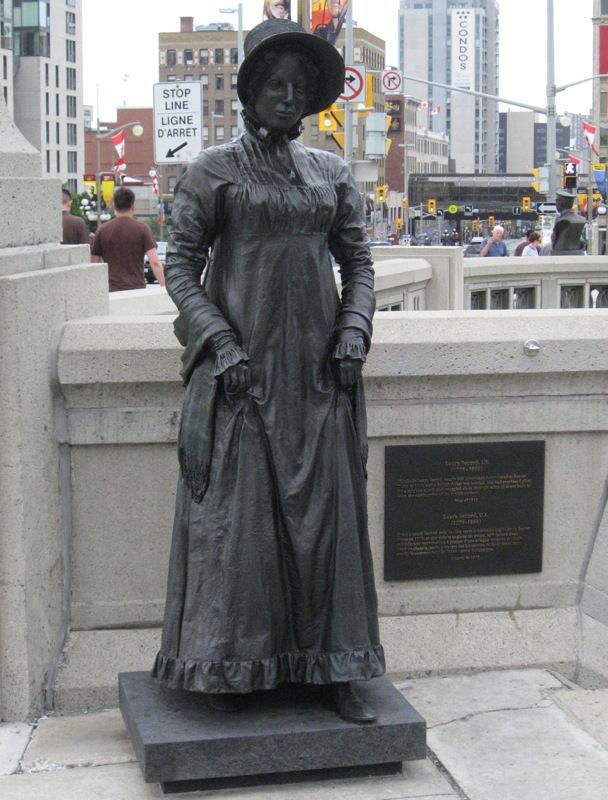
Lieutenant Colonel Michael d'Irumberry de Salaberrry
Lieutenant Colonel Charles-Michel d'Irumberry de Salaberry (November 19, 1778 - February 27, 1829) was a French-Canadian of the seigneurial class who served as an officer of the British army in Lower Canada (now Quebec) and won distinction for repelling the American advance on Montreal during the War of 1812.
Part of Valiants Memorial
Photo 986
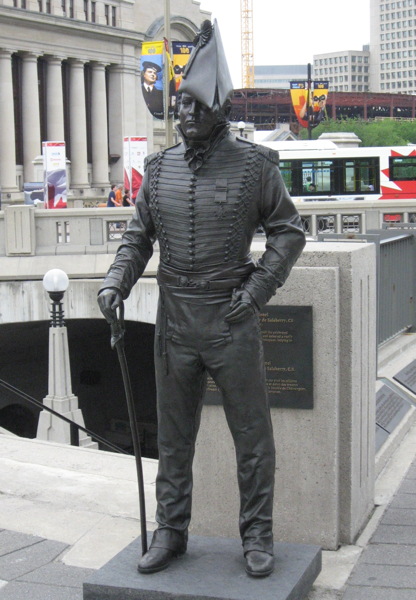
Bust of Le comte de Frontenac, part of Valiants Memorial
Louis de Buade, Comte de Frontenac et de Palluau (1622–1698) was a French soldier, courtier, and Governor General of New France from 1672 to 1682 and from 1689 to his death in 1698. He established a number of forts on the Great Lakes and engaged in a series of battles against the English and the Iroquois.
Photo 989
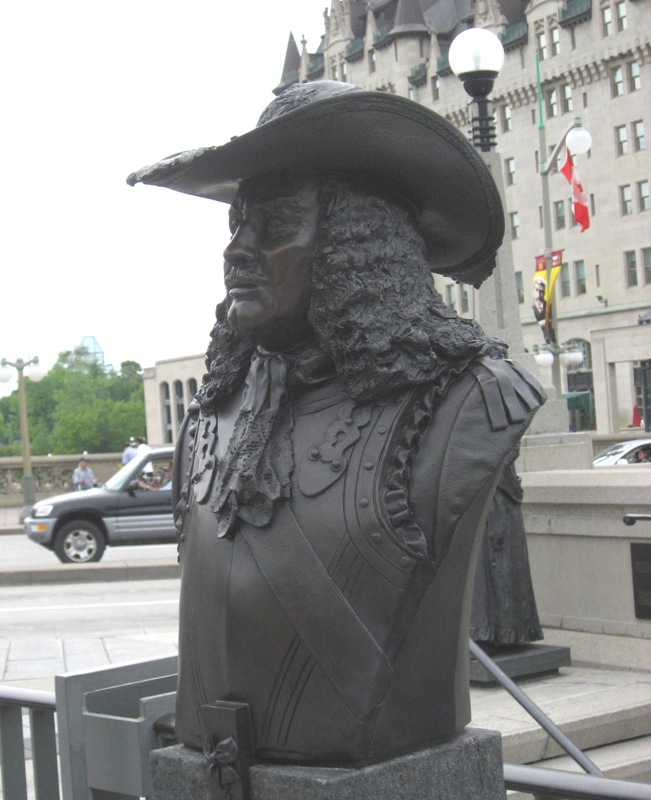
John Butler (1728-1796) was a Loyalist who led an irregular unit known as Butler's Rangers on the northern frontier in the American Revolutionary War. He led Seneca and Cayuga forces in the Saratoga campaign. He later raised and commanded a regiment of rangers.
part of Valiants Memorial
Photo 992
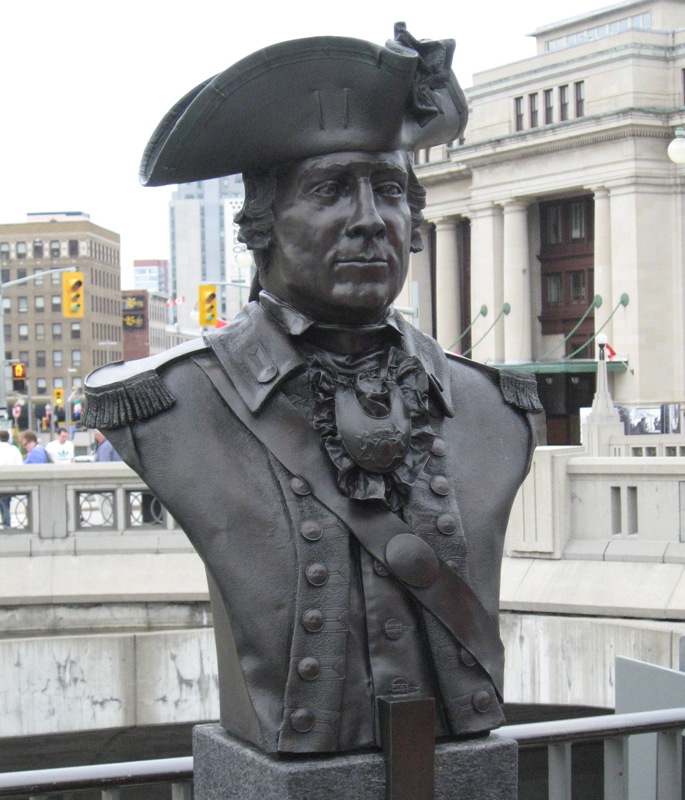
Major-General Sir Isaac Brock KB (1769–1812) was a British Army officer. Brock was assigned to Canada in 1802. Despite facing desertions and near-mutinies, he commanded his regiment in Upper Canada (present-day Ontario) successfully for many years. He was promoted to major general, and became responsible for defending Upper Canada against the United States. While many in Canada and Britain believed war could be averted, Brock began to ready the army and militia for what was to come. When the War of 1812 broke out, the populace was prepared, and quick victories at Fort Mackinac and Detroit crippled American invasion efforts.
Brock's actions, particularly his success at Detroit, earned him a knighthood, membership in the Order of the Bath, accolades and the epithet "The Hero of Upper Canada".
part of Valiants Memorial
Photo 994
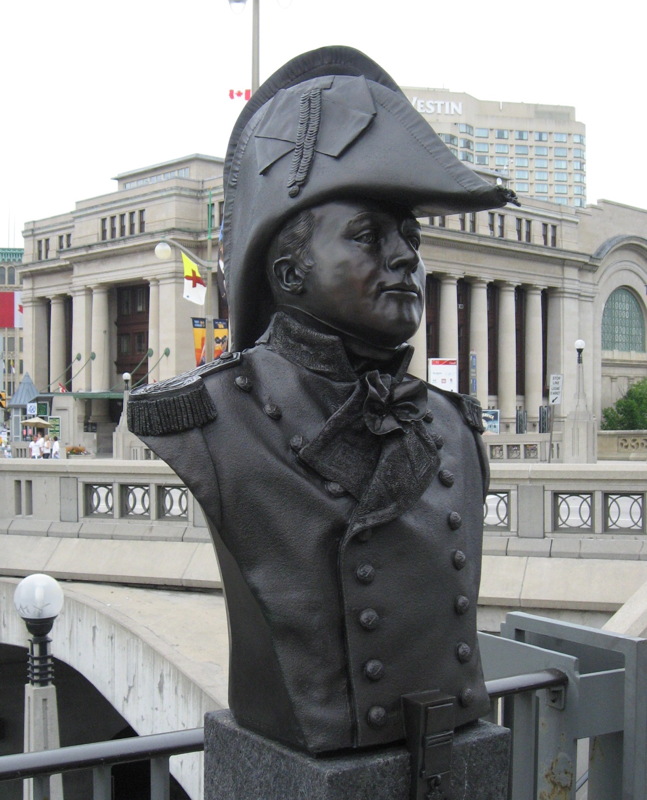
Georgina Pope (1862-1938) was a Canadian nurse who served with distinction in the Second Boer War and First World War.
Georgina Pope was born in 1862 in Prince Edward Island. In 1899, after completing nursing studies at Bellevue Hospital in New York City, she volunteered for nursing service in the Second Boer War. Placed in command of the first group of nurses to go overseas, she served for more than a year in South Africa. She returned there in 1902 as commander of the Canadian Army Nursing Service. In 1903, she became the first Canadian to receive the Royal Red Cross, awarded to her for conspicuous service in the field. In 1908 she was appointed first Matron of the Canadian Army Medical Corps, and served in England and France during the First World War.
part of Valiants Memorial
Photo 996
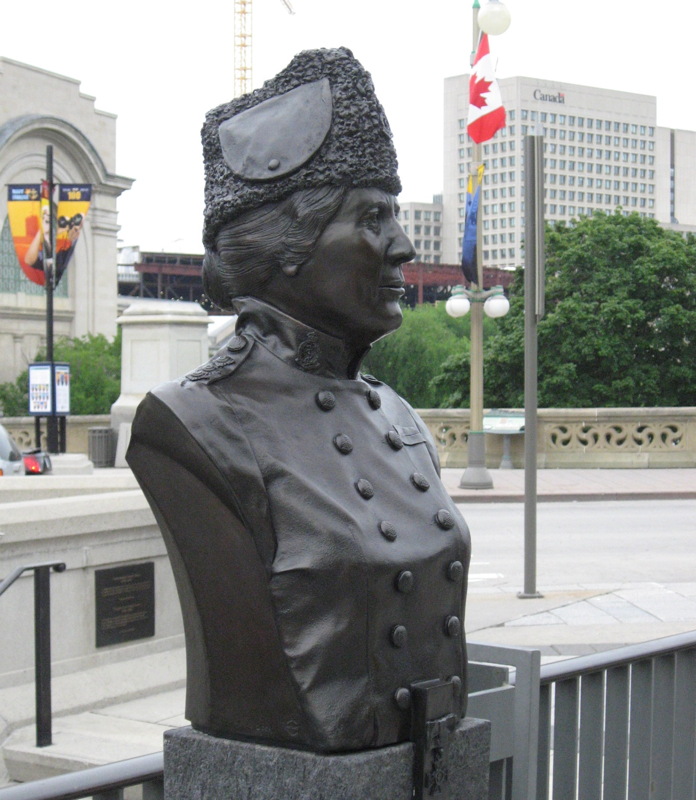
Captain John Wallace Thomas CBE (1888–1965) was a Newfoundland merchant mariner who served with distinction in the First and Second World Wars.
part of Valiants Memorial
Photo 998
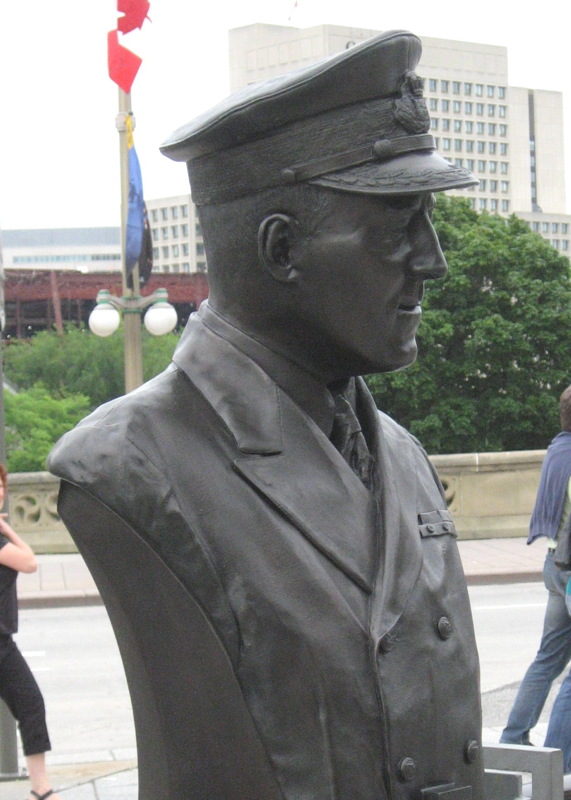
Pierre Le Moyne d'Iberville (1661–1706), was a soldier, ship captain, explorer, colonial administrator, knight of the order of Saint-Louis, adventurer, privateer, trader, and founder of the French colony of Louisiana.
He battled the English in the French-English war over Canada. In 1697, when three English Vessels attacked his ship, in Hudson Bay, he sank one, boarded another and then captured the English outpost at York Fort.
part of Valiants Memorial
Photo 1002
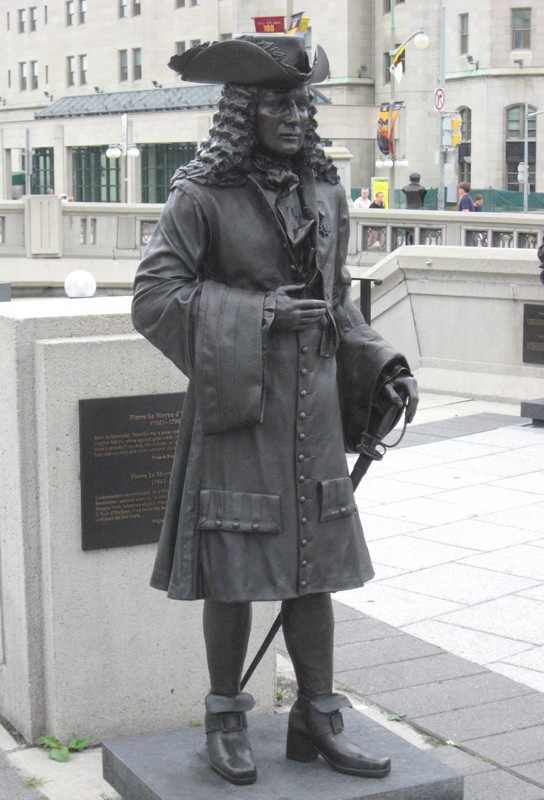
Thayendanegea or Joseph Brant (1743–1807) was a Mohawk military and political leader who was closely associated with Great Britain during and after the American Revolution. He was perhaps the most well-known North American Indian of his generation. He met many of the most significant people of the age, including George Washington and King George III.
During the American Revolutionary War, Brant led Mohawk and colonial Loyalists against American revolutionaries in a bitter partisan war on the New York frontier. During the war, he was accused by the Americans of committing atrocities, charges that were later shown to be false. After the war, he relocated to Canada, where he remained a prominent leader.
part of Valiants Memorial
Photo 1003
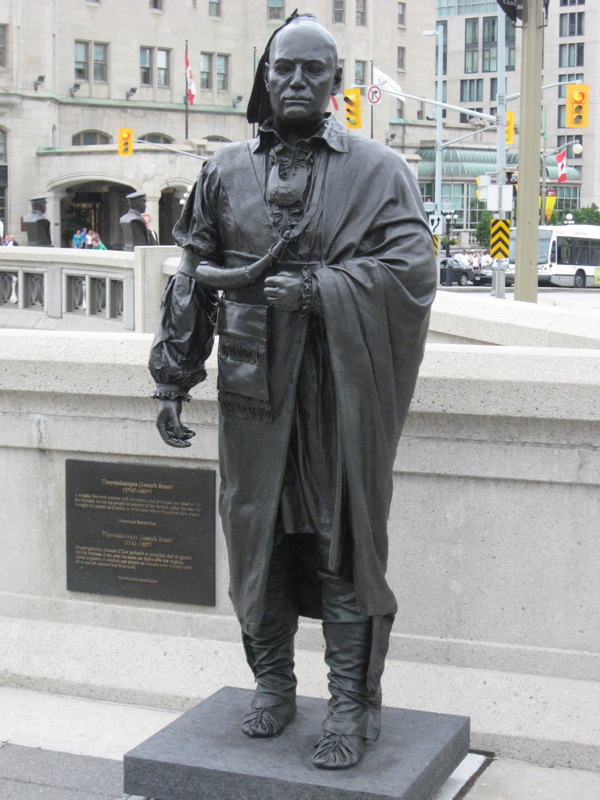
Robert Hampton "Hammy" Gray VC, DSC (1917-1945) was a Canadian naval officer, pilot, and recipient of the Victoria Cross (VC) during World War II, one of only two members of the Royal Navy's Fleet Air Arm to have been thus decorated in that war. Gray was one of the last Canadians to die during World War II, and was the last Canadian to be awarded the Victoria Cross.
part of Valiants Memorial
Photo 1006
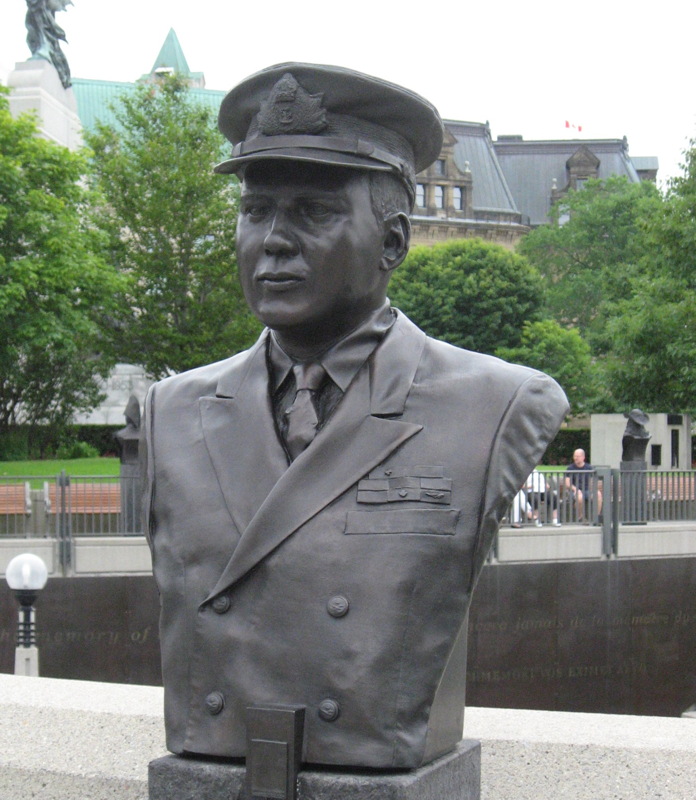
Andrew Charles (Andy) Mynarski VC (1916–1944) was a Canadian recipient of the Victoria Cross, the highest and most prestigious award for bravery in the face of the enemy that can be awarded to British and Commonwealth forces. Mynarski was 27 years old and flew with 419 "Moose" Squadron, Royal Canadian Air Force during the Second World War when he gave his life attempting to help rescue a trapped crew member.
part of Valiants Memorial
Photo 1008
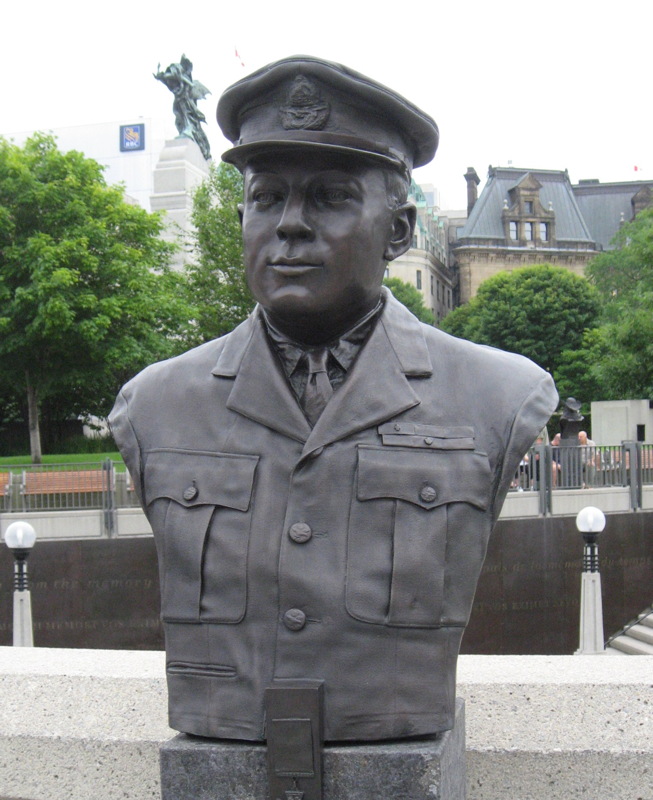
Sir Arthur William Currie GCMG, KCB (5 December 1875 – 30 November 1933), was a Canadian general during World War I. He had the unique distinction of starting his military career on the very bottom rung as a pre-war militia gunner before rising through the ranks to become the first Canadian commander of the four divisions of the unified Canadian Corps of the Canadian Expeditionary Force. He was the first Canadian to attain the rank of full general. Currie's success was based on his ability to rapidly adapt brigade tactics to the exigencies of trench warfare, using set-piece operations and "bite-and-hold" tactics. He is generally considered to be among the most capable commanders of the Western Front, and one of the finest commanders in Canadian military history.
part of Valiants Memorial
Photo 1010

Paul Triquet, VC, CD (1910–1980) was a Canadian recipient of the Victoria Cross, the highest award for valour "in the face of the enemy" that can be awarded to British and Commonwealth forces.
On 14 December 1943 during the attack on Casa Berardi, Italy, when all the other officers and half the men of his company had been killed or wounded, Captain Triquet dashed forward and, with the remaining men, broke through the enemy resistance. He then forced his way on with his small force - now reduced to two sergeants and 15 men - into a position on the outskirts of Casa Berardi. They held out against attacks from overwhelming numbers until the remainder of the battalion relieved them, the next day.
Photo 1012
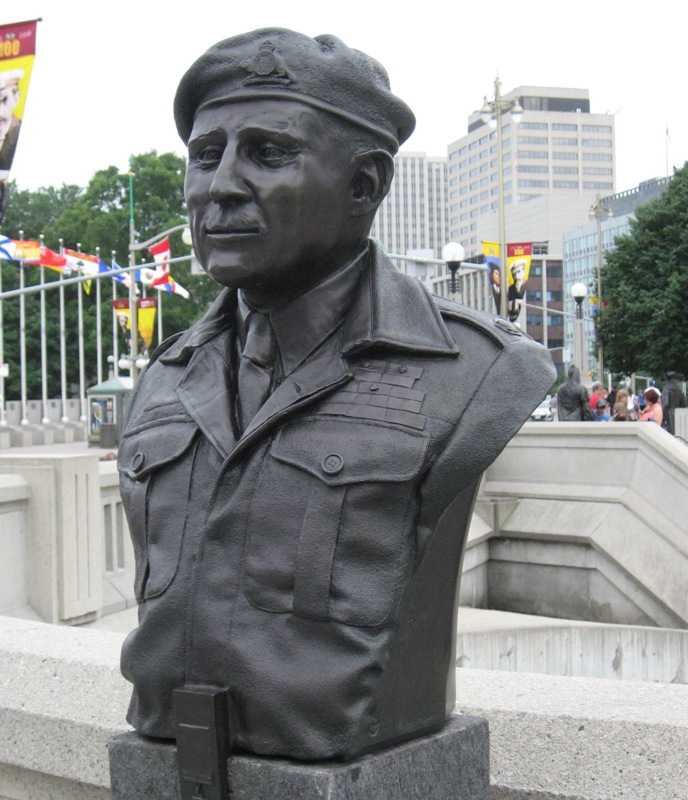
Joseph-Thomas Kaeble, VC, MM (1892–1918) was a Canadian recipient of the Victoria Cross, the highest military award for gallantry in the face of the enemy given to British and Commonwealth forces. He was the first French Canadian soldier to be decorated with the VC and Military Medal.
On 8 June 1918 at Neuville-Vitasse, France, Corporal Kaeble performed an act of bravery for which he was awarded the Victoria Cross. He died whilst doing so.
Photo 1014
